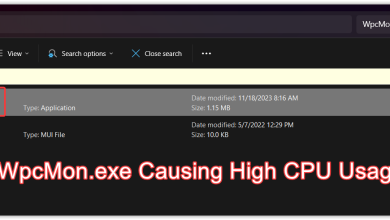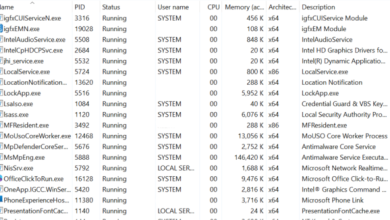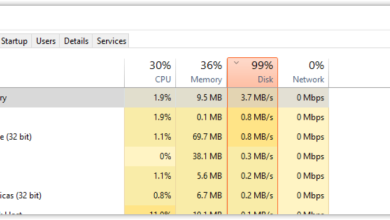Fix: Remote Procedure Call High CPU and Disk Usage
Remote Procedure Call is a protocol which a program uses to request service from a program located on another computer on a network without indulging into the network details. RPC uses the client-server model. The requesting program is considered a client while the service provider is the server. RPC is a synchronous process requiring the program to be suspended until the results of the remote procedure are returned.
Sometimes it happens when the program doesn’t get suspended and causes high CPU and Disk usage on your computer. There are many services which use RPC such as Windows Update, OneDrive or Dropbox etc. We can try looking into these services and determine which process is causing the problem.
Solution 1: Disabling OneDrive
OneDrive is known to cause high CPU usage in a lot of cases. It constantly syncs with the cloud server and if any configuration isn’t done right, it causes a lot of disk usage. We can try disabling OneDrive properly and check if the problem still persists. You can always revert the changes if this doesn’t work for you.
- Press Windows + R button to launch the Run application. Type “control panel” and hit Enter.
- Once in the control panel, click on “Uninstall a program” found under the title of Programs and Features.
- Now Windows will list all the installed programs in front of you. Navigate through them until you find OneDrive. Right-click it and select Uninstall.

- Once it is uninstalled, restart your computer and check if this fixed the CPU usage.
If you don’t find OneDrive listed in your programs list, we can try disabling it.
- If your OneDrive is enabled, you will be able to see a OneDrive icon present on your taskbar at the top right side of the screen. Right-click it and select Settings.

- Navigate to the Settings tab. Uncheck every box present under the subheading of General.

- Now navigate to the Auto Save tab. Here under the subheading of Documents and Pictures, select “This PC only” option against the category of pictures and documents.

- Now navigate to the Account tab and click on Choose folders present at the bottom of the window.

- A new window will pop up containing a list of the folders synced with OneDrive. Now uncheck all the boxes representing folders. Now save changes to the settings and exit.

- Now open your OneDrive settings again and navigate to the Account tab present at the top.
- Click on Unlink this PC present under the subheading of OneDrive. Save changes and exit the settings.

- Now open your file explorer, right click on OneDrive icon present at the left navigation pane and click on Properties.
- On the General tab, check the box of “Hidden” present under the subheading of Attributes. Click Ok to save changes and exit. This will hide OneDrive from your file explorer.

- Now right click on the OneDrive icon present at the bottom right side of the screen and click on Exit. This will exit OneDrive.
Now restart your computer and check if the disk/CPU usage is fixed.
Solution 2: Disabling Windows Update
Windows, when searching for updates, also uses RPC protocol. Even when updates are installed on your PC, Windows keeps searching for more available updates to download. This can sometimes keep going in a loop causing it to consume high CPU/Disk usage. We can try disabling Windows Update and check if the problem still persists.
- Press Windows + S to launch the search bar. Type “windows update” and open the result which comes forth.

- Under the heading of “Update settings”, select Advanced Options.

- Scroll to the bottom of the page. Here you will find an option “Choose how updates are delivered”. Click it.

- Now a new window will pop up consisting of options about where to download updates. This setting is primarily responsible for RPC protocol as your computer keeps searching for updates when it’s connected to the internet. Disable it, and navigate back to the previous window.

- Enable “Pause Updates”. Now restart your computer and check if the CPU/Disk usage got better. Give your computer some time if it didn’t, wait for around 30 minutes and see if it gets any better. If it doesn’t, refer to more methods below.
If Windows update still doesn’t shut down properly and you think it is the culprit, we can try disabling the service permanently until you want to turn it on again. We will also delete already downloaded update files.
- Press Windows + R to bring up the Run application. In the dialogue box, type “services.msc”. This will bring up all the services running on your computer.
- Browse through the list until you find a service named “Windows Update Service”. Right-click on the service and select Properties.

- Click on Stop present under the sub-heading of Service Status. Now your Windows Update service is stopped and we can proceed.
Now we will navigate to Windows Update directory and delete all the updated files already present. Open your file explorer or My Computer and follow the steps.
- Navigate to the address written below. You can also launch the Run application and copy paste the address to reach directly.
C:\Windows\SoftwareDistribution
- Delete everything inside the Software Distribution folder (you can also cut paste them to another location in case you want to place them back again).

Solution 3: Using Deployment Image Servicing and Management
DISM is a command-line tool which is used to service your operating system. We can try executing this command and if there are any discrepancies, they will be fixed.
Note: Windows update is required to execute this solution. If your windows update is broken/not working, you might want to consider restoring your OS from a previous restore point.
- Press Windows + S to launch the search bar. Type “command prompt” in the dialogue box, right-click the result and select “Run as administrator”.
- Once in the command prompt, execute the following command:
DISM.exe /Online /Cleanup-image /Restorehealth

- The process takes time so be patient and let the process complete. Now execute the following command:
sfc /scannow
- After both the commands have been executed, reboot your computer and check if the problem got solved.
Solution 4: Checking Third-Party Applications
There are many reports when applications such as Google Chrome, Dropbox, Xbox etc. cause problems in the disk usage. Each computer configuration is different hence we cannot diagnose exactly which application is causing trouble.
Make an educated guess, disable each of these applications properly and check your CPU/Disk usage. Give more priority to an application which requires frequent internet access for sync purposes. Here are some applications and the fixes:
- If you have Google Chrome, reinstall it.
- Disable Dropbox properly and disable the application from launching on startup.
- Turn off Xbox application.
Solution 5: Disabling Windows Defender
Many users reported that Windows Defender was causing the problem. The application kept searching for virus definitions and in turn, caused high CPU usage by running RPC protocol.We can try to disable the antivirus utility and check if the problem still persists.
- Press ⊞ Win + R button and in the dialogue box type “gpedit.msc”.
- A Local Group Policy Editor will come forward. Click the Computer Configuration tab and select Administrative Templates.
- Here you will see a folder of Windows Components. Click it and select Windows Defender.

- Here you will find a number of different options. Browse through them and select “Turn off Windows Defender”.

- Select “Enabled” to turn Windows Defender off. Apply settings and press OK.

After completing the above steps, your Windows Defender should be turned off. Restart your computer and check if the Disk/CPU usage got fixed.





